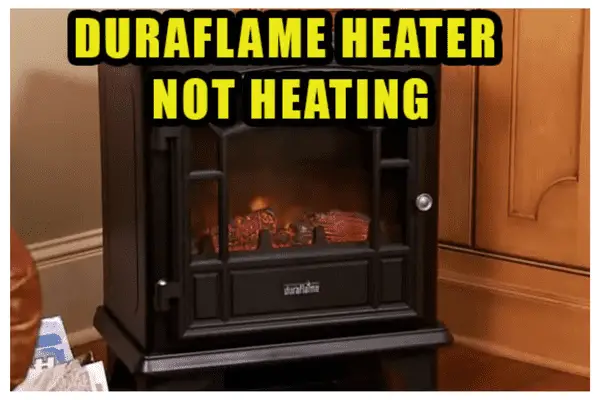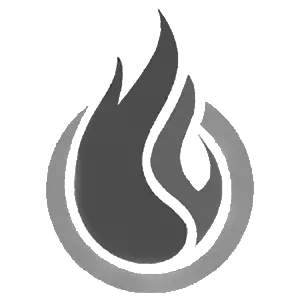The main reasons behind the Duraflame heater not heating are power issues, the heater reaching maximum temperature, malfunctioning thermostat, faulty drive motor, clogged filter, damaged temperature gauge, defective light bulbs, going through a cooling period, and faulty heating element.
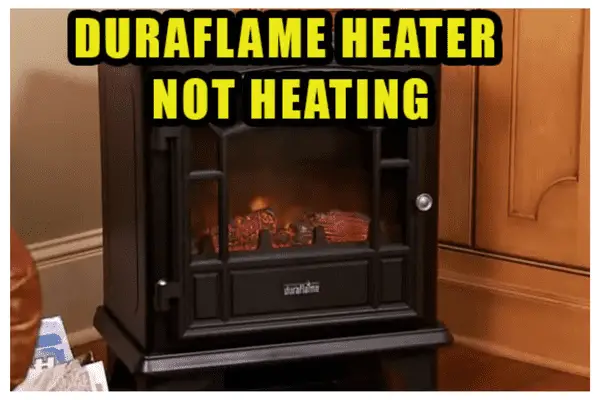
You can fix power issues by making sure your power outlet, circuit breakers, fuses, and circuit breakers are operational and replace them if they’re malfunction. The other issues require other solutions.
Keep reading this article to find out more about the reasons that cause your Duraflame heater to not provide enough heat and learn what you can do in each of these problems. Let’s dive in!
Table Of Contents
- Duraflame Heater Not Heating [9 Easy Fixes]
- 1. Power Issues
- 2. Reaching Maximum Temperature
- 3. Malfunctioning Thermostat
- 4. Faulty Drive Motor
- 5. Clogged Filter
- 6. Damaged Temperature Gauge
- 7. Defective Light Bulbs
- 8. Cooling Period
- 9. Faulty Heating Element
- FAQs:
- How do you adjust the temperature on a Duraflame heater?
- Why is my Duraflame heater remote not working?
- What does an E3 error code mean in a Duraflame stove?
- Why does my Duraflame heater turn on by itself?
- Why is my Duraflame heater blowing cold air?
- Conclusion
Duraflame Heater Not Heating [9 Easy Fixes]
There are many potential reasons behind your Duraflame heater not working to its full potential. We’ll discuss the most common ones in this section.
1. Power Issues
If there are issues with the power supply, you’ll see the Duraflame heater not getting hot to its full potential and can even be shut off during its operation.
It sounds simple enough to check but many people miss checking this simple thing as they think the issue is more complicated. The issue could be with one of the following things –
- The power outlet.
- The heater cord.
- Defective fuses.
- Tripped circuit breakers.
Thankfully, it’s easy to diagnose if something is wrong with any of them. For the power outlet, put something else instead of the heater and see if it’s running well. If the new appliance has no issues when powered by that socket, you can rule it out.
The next thing to check is the heater cord itself. The heater cord will likely show visible signs of wear and tear if they’re damaged.
A malfunctioning heater cord can never ensure a suitable power supply to the heater. Make sure you switch off the heater before you check the cord.
There are fuses in heaters to protect them from overheating in order to prevent a fire hazard.
If the heater has previously gone through dangerously high levels of operating temperature, a fuse could be blown. Inspect the fuse box and check if it’s damaged in any way.
Solution:
If you can confirm upon the initial diagnosis that something is wrong with any of these parts, you need to replace the faulty part in question.
The power sockets, heater cords, and blown fuses can be easily replaced with new ones if any of them isn’t functioning correctly.
If the fault lies with the electrical system in your house and you have a tripped circuit breaker, you can simply reset it. But if it is damaged because of the electrical surge, you’ll have to replace it.
2. Reaching Maximum Temperature
When you set the temperature too high on the thermostat and the room is too big for the heater to achieve that, it sets itself off after getting to its maximum temperature.
When the heater reaches its full potential, it automatically shuts itself off. It could be the reason why your Duraflame heater is not heating.
Solution:
If you’re facing this problem, resetting the heater can help you. Follow these steps to do the Duraflame heater master reset properly:
- Turn the heater off and unplug it from the socket.
- Hold down the power button for at least 5 seconds.
- Plug the heater back in while keeping the power button pressed.
- Release the button to turn the heater back on and complete the master reset procedure.
If the heater starts to heat up again because the temperature has been reset, your problem is solved.
But if it still doesn’t heat up, that means you’ve maxed on its potential and it’s too small for your room. Of course, a faulty thermostat can also cause this problem.
3. Malfunctioning Thermostat
The thermostat is an integral part of the heater ensuring that you get the desired temperature. When the thermostat processes a wrong temperature reading, it can mess up your heater and cause issues with it.
For example, if the thermostat thinks that you’ve reached the set temperature, it’ll shut off the heater even when you didn’t get to that temperature in reality.
The main reason behind the Duraflame heater thermostat not working is that it’s common for it to slip out of place.
When the thermostat detaches from the other electrical components, it gets the wrong reading. Sometimes, the thermostat goes bad altogether and keeps shutting off the heater.
Solution:
If the thermostat has detached from the components, adjusting the position of the thermostat and the contact points will do the trick. But if the thermostat has gone bad, it’ll need to be replaced.
4. Faulty Drive Motor
If the Duraflame heater fan doesn’t operate properly, the heater will have trouble keeping the room warm. The main reason why you may find the Duraflame heater fan not working well is a faulty drive motor.
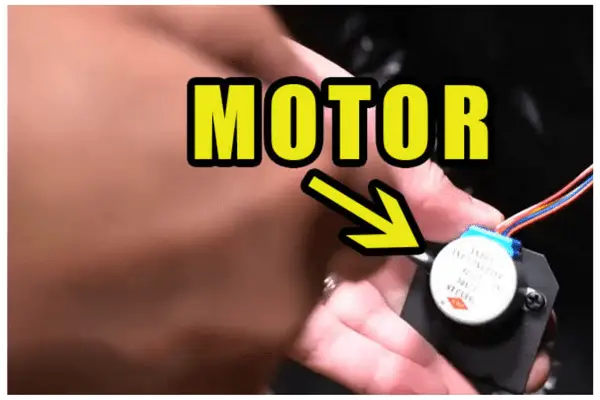
The motor spins and creates motion in the rod. Without it, the rod won’t move and you won’t see any flames in the heater.
Sometimes, you’ll see flames but they won’t be moving much because of a weak drive motor.
Solution:
The faulty drive motor needs to be replaced with a new one when it goes bad. It’s an easy process and you can do it on your own.
The heating element should be cool before you start working on the heater to avoid any accidents. With that said, follow these steps to replace the motor in your Duraflame heater:
- Unplug the heater and let it cool down.
- Use a screwdriver and unscrew the screws holding the access panel in position.
- Take off the access panel.
- Locate the spinning rod. There will be bulbs on it and the drive motor on one side.
- Remove the screws connected to the motor.
- Disconnect the wires connected to the motor.
- Pull out the old motor and replace it with the new one.
Do the above steps in reverse to ensure that the new motor stays in its position. Your heater should work fine now if the blower motor was the reason behind it, not heating.
5. Clogged Filter
The heater fan is supposed to blow hot air when you turn it on and heat up your room. But when you find your Duraflame heater not blowing hot air, it may appear like the issue is with the fan.
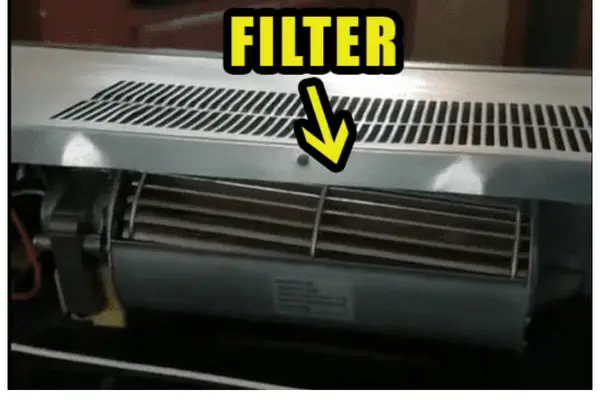
But more often than not, it’s the filters that are clogged by dirt and debris while the fun is running fine. The excessive amount of dirt is keeping the hot air produced in the heater from coming out.
When the filter gets clogged, the heat gets trapped within the heater and raises the overall temperature of the heater.
That can cause the heater to be overheated and even shut off. A common indicator of having a clogged filter is that you’ll often see an overheating warning or error code.
Solution:
If the filter in your heater has a plastic frame attached to it, it means that it’s reusable. The first thing to do here is clean the filter. You don’t need any special equipment for this as water will do just fine.
The task is simple – locate the filter, clean it, dry it, and put it back in the heater. If the filter in your heater isn’t reusable, you need to replace it with a new one.
As a general rule of thumb, you should clean the filter at least 3-4 times a year to prevent these issues from happening.
6. Damaged Temperature Gauge
As you know, the heater has a built-in safety mechanism to shut itself off when it becomes overheated. It cuts off the power supply to all the components in the heater.
It does so to prevent them from melting and getting damaged because of excessive heat. But, have you wondered how the heater measures its internal temperature and how it decides to shut off?
There’s a device called a temperature gauge that monitors the temperature inside the heater at all times. And when it gets a reading that’s too high, the safety feature kicks in and shuts off the heater.
There are two possibilities here – either your heater is actually overheated or the temperature gauge is damaged.
If the heater is truly overheated, it’s most likely caused by the build-up of dirt and debris in the filters and heaters. Otherwise, the temperature gauge is faulty.
Solution:
Cleaning the filters and heater itself will do the job when the heater gets overheated because it’s dirty. In fact, the build of dirt in the temperature gauge can also cause it to malfunction.
So, clean the temperature gauge first if it looks dirty. If that solves the problem, you’re good.
But if that doesn’t work, the temperature gauge is most likely permanently damaged and you’ll have to replace it with a new one.
7. Defective Light Bulbs
The flame you see on your Duraflame heater originates from the light bulbs in the heater. The most common reason behind the Duraflame heater flame not working is worn-out light bulbs.
When the light bulbs go out, you won’t see any flame coming from your heater. Light bulbs that are incompatible with your heater and are not of the same wattage can also cause your heater to shut down.
Solution:
If the light bulbs are of the incorrect wattage or worn out, they need to be replaced with new ones. Make sure that the bulbs you get are compatible with your Duraflame heater.
8. Cooling Period
If you’re still wondering why is my Duraflame heater not heating, another possible reason behind it could be that it’s going through a cooling period. It’s a normal functioning mechanism for any heater.
During the cool-down cycle, it’s common for the heater to blow cold air instead of hot air. It can be over in a few minutes or last longer depending on the temperature settings you’ve put in the heater.
Solution:
The problem will be automatically fixed when the heater completes the cooling period. It’s recommended that you do nothing here and interrupt this cycle.
It’s a necessary step for the heater to cool down once in a while to keep itself from overheating and getting damaged.
9. Faulty Heating Element
The build of dirt in the heating element can cause it to become too hot. The inside of the heater begins to be overheated when it happens and the heater shuts off before giving off sufficient heat to warm up the room.
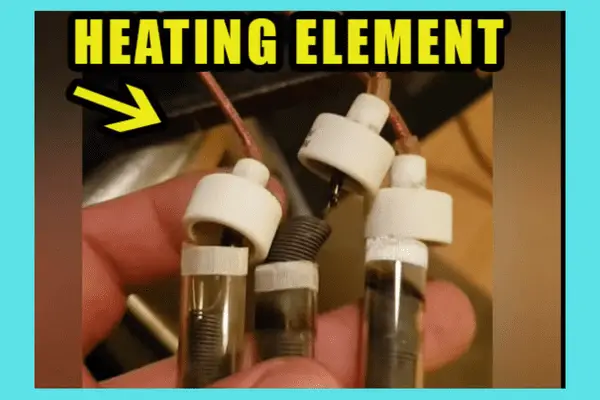
Diagnosing a faulty heating element isn’t too complicated. Locate the heating element and inspect its color when the heater is turned on.
A functional heating element will emit a bright orange glow. But, a faulty heating element will give off a weak glow.
You can also check the heating element with a multimeter. They’re supposed to have very high resistance when you connect the probes to the end of the heating element.
If the resistance is low or you see an “infinity” sign in the multimeter, your heating element is malfunctioning.
Solution:
If there is a good amount of dirt and debris surrounding the heating element, you need to clean it.
It’s a good idea to clean the heater before the start of each season to keep it running well and without any problems in general. But if cleaning it doesn’t solve the problem, you’ll have to replace it.
FAQs:
How do you adjust the temperature on a Duraflame heater?
You can change the temperature in a Duraflame heater either by pressing the buttons on the heater itself or using a remote if your heater has one.
Why is my Duraflame heater remote not working?
The two most common reasons behind the remote not working are either the batteries are out of charge or the remote is faulty. Change the batteries first, and if that doesn’t work, replace the remote.
What does an E3 error code mean in a Duraflame stove?
The E3 error code means that the temperature inside the heater is too high and it has become overheated. Resetting the heater, cleaning the filters, and changing the temperature gauge are the most common solutions for this code.
Why does my Duraflame heater turn on by itself?
There’s a feature in Duraflame heaters to turn on when the temperature goes below a certain point. If it’s an infrared heater, it can also be triggered by other devices like a TV remote if the remote has an infrared sensor.
Why is my Duraflame heater blowing cold air?
Apart from going through a cool-down cycle, the heater can blow cold air when you set the temperature too low, the thermostat is detached, and the heating element is damaged.
Conclusion
If you find your Duraflame heater not heating your room as much as it should, now you know the main reasons behind it. Diagnose each of these potential causes behind it and take the necessary steps to solve them.
Hopefully, you’ll be able to find and fix the problem that’s keeping your heater from heating the room and get it up and running again. Leave a comment below if you have any more questions about Duraflame heaters.
